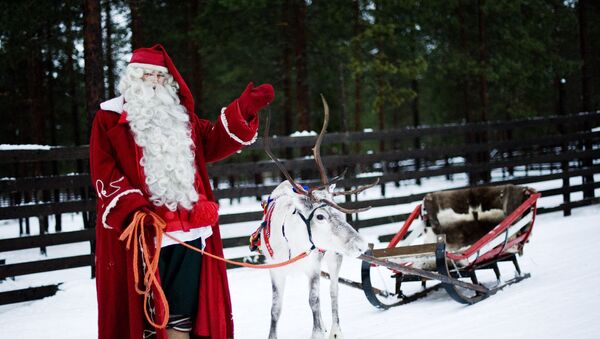The relic is a fragment of a pelvis that is currently owned by a priest, Father Dennis O'Neill of St. Martha of Bethany Church in Illinois. According to scientists, although the bone does date from the time St. Nicholas lived, there is no conclusive evidence that it actually belonged to the saint.
Historians generally agree that St. Nicholas, a Greek bishop known for his acts of generosity, died in 343 AD, and many alleged St. Nicholas relics, when tested, turn out to be fragments from later times.
"Many relics that we study turn out to date to a period somewhat later than the historic attestation would suggest," according to Professor Tom Higham, a director of the Oxford Relics Cluster at Keble College's Advanced Studies Center, the BBC reported.
"This bone fragment, in contrast, suggests that we could possibly be looking at remains from St. Nicholas himself," he added.
— Oxford University (@UniofOxford) December 6, 2017
St. Nicholas is believed to have lived in the ancient city of Myra, which is now part of the city of Demre in southern Turkey. When he died, his remains were buried in a church in Demre. Some historians believe that the saint's bones were removed from the Demre site in the 11th century and transported to Bari, Italy, where the Basilica di San Nicola was built so that his remains could be preserved there.
Other bones that are thought to be St. Nicholas' are in the San Nicolò al Lido church in Venice, Italy.
The bones in Bari only include the left ilium, which is the upper part of the pelvis. The bone that belongs to O'Neill is from the lower part of the pelvis, suggesting that the bones could have belonged to the same person.
"These results encourage us to now turn to the Bari and Venice relics to attempt to show that the bone remains are from the same individual," said Dr. Georges Kazan, another director of the Oxford Relics Cluster. "We can do this using ancient paleogenomics or DNA testing. It is exciting to think that these relics, which date from such an ancient time, could in fact be genuine."
Though these findings sure are exciting, science cannot definitely prove that these relics belong to St. Nicholas, Higham warns.
"Science is not able to definitely prove that it is; it can only prove that is not, however," he said.


